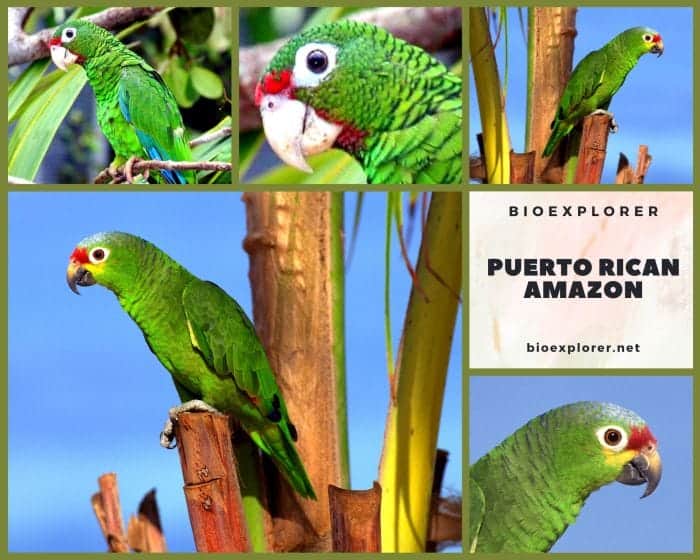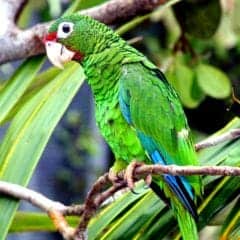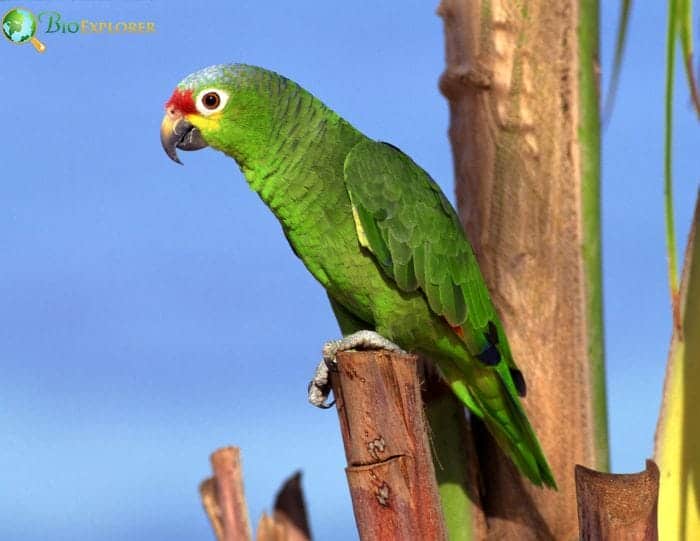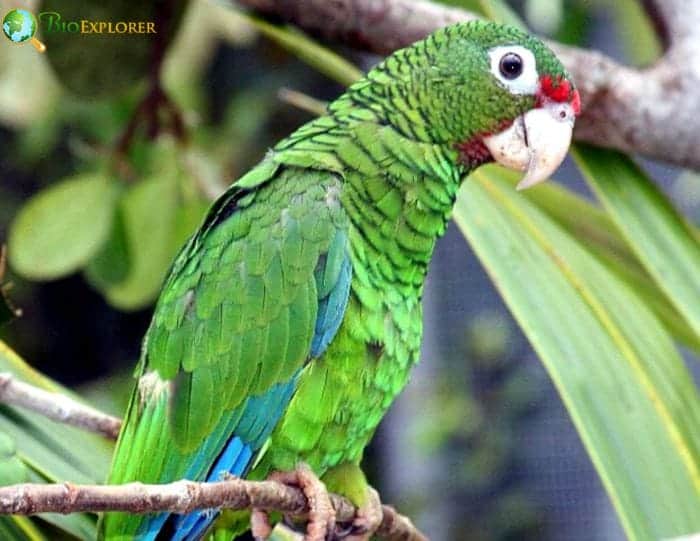
| Animalia | Psittaciformes | Psittacidae | Amazona | Amazona vittata |
The Puerto Rican Amazon (Amazona vittata), also known as the Puerto Rican parrot or iguaca, is a rare, vibrantly green parrot endemic to Puerto Rico measuring about 11 inches long.


- Common Name(s): Puerto Rican amazon, Puerto Rican Parrot, Iguaca
- Family: Psittacidae
- Body Dimensions: 28–30 cm
- Male Plumage Color(s): mainly green with red forehead and white eye-ring
- Female Plumage Color(s): mainly green with red forehead and white eye-ring
- Habitat: El Yunque and Rio Abajo Forests
- Diet: seeds, fruits, flowers, nectar
- Native Countries: Puerto Rico
- Continent(s): North America
- Taxonomy Classification Year: 1783
- Taxonomist(s): Pieter Boddaert
Puerto Rican Amazon Fun Facts

- Distinguished by its bright red forehead, white eye rings, and red wing patches visible during flight, this species is restricted to El Yunque National Forest and Rio Abajo State Forest.
- The Puerto Rican Amazon is critically endangered, with a wild population estimated between only 50-200 individuals. Its sharp decline began in the 19th century as forests were cleared for agriculture and the parrots were hunted as crop pests.
- By 1975, only 13 birds remained. Captive breeding and reintroduction programs prevented extinction, but habitat loss and threats like illegal pet trade, predation, and hurricanes continue to impact this species[1].
- The Puerto Rican Amazon is a secondary cavity nester, relying on mature trees like the Tabonuco (Dacryodes excelsa) for nesting sites. It breeds once yearly between January and July, laying 2-4 eggs.
- The Puerto Rican Parrot’s diet comprises over 60 flowers, fruits, seeds, leaves, and bark from high forest canopies. An important seed disperser, this herbivorous parrot feeds in a slow, selective manner.
- As an endemic species with immense cultural value, intensive conservation efforts are underway to boost the Puerto Rican Amazon population. These include habitat restoration, captive breeding, predator control, environmental education programs, and establishing a second wild population.

Safeguarding the remaining old-growth rainforest is vital to secure the future of this exceptionally rare Caribbean parrot. Recovering to over 500 total birds by 2021 gives hope, but continued action is critical.
Suggested Reading: Birds of Puerto Rico
Cite This Page
APA7MLA8Chicago
BioExplorer.net. (2025, December 27). Puerto Rican Amazon. Bio Explorer. https://www.bioexplorer.net/animals/birds/puerto-rican-amazon/.
BioExplorer.net. "Puerto Rican Amazon" Bio Explorer, 27 December 2025, https://www.bioexplorer.net/animals/birds/puerto-rican-amazon/.
BioExplorer.net. "Puerto Rican Amazon" Bio Explorer, December 27 2025. https://www.bioexplorer.net/animals/birds/puerto-rican-amazon/.











